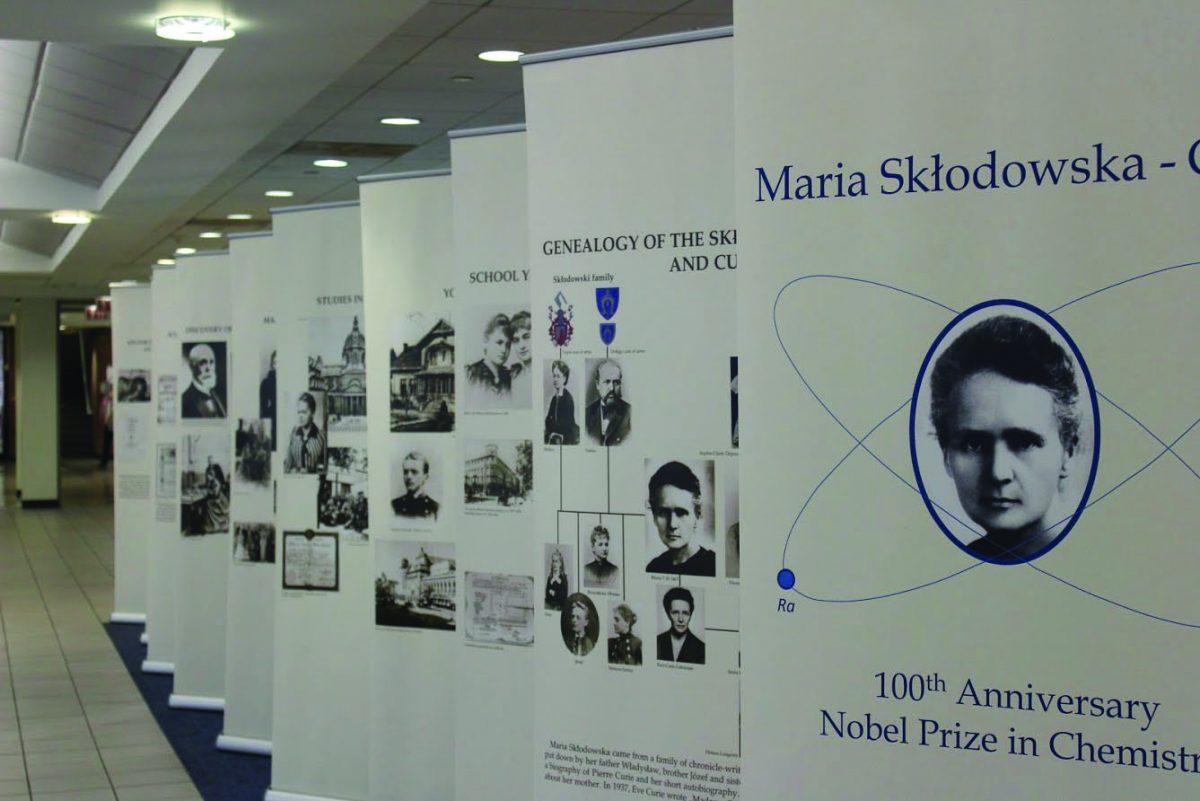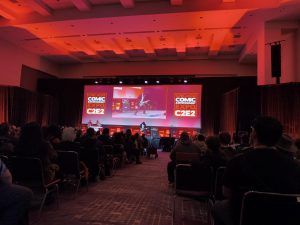Women in science: A commemoration to Maria Sklodowska Curie
“A photo exhibit during the Women in Science Conference on Sept. 18 and 19. Guests speakers like Aleksandra Jarczewska presented a discussion on Marie Curie.”
September 26, 2017
NEIU was the host of the first-ever Women in Science Conference on Sept. 18 and 19, celebrating the career and accomplishments of female-scientist, Maria Sklodowska Curie, commonly known as Marie Curie.
Julie Des Jardins and Dr. Sophie Shrand were two of the keynote speakers at the two-day conference held throughout NEIU’s main campus.
A film screening of Marie Curie: The Courage of Knowledge, lab workshops, a photography exhibit and six sessions which featured twenty experts from diverse fields of study such as chemistry, music, physics, and mathematics also starred in the conference. A floral ceremony took place to recognize the women of NEIU and those who came from far and wide to participate.
Historian and author of “Madame Curie Complex: The Hidden History of Women in Science” Des Jardins discussed the cultural impact Curie had on women in science in the U.S. Curie became the first woman to win the Nobel Prize in Physics in 1903 and Chemistry in 1911. She was the only woman to win two Nobel Prize awards in two different fields. Aside from this impact, Des Jardins focused on the personal and professional life of Curie.
She shared the story of Curie’s friendship with American journalist Missy Meloney, who promoted her work on cancer research. Although Des Jardins describes how Maria Curie made grand discoveries in lung cancer prevention and developed ways to control it. Meloney managed to interview Curie for her magazine despite Curie’s shyness towards public appearance. With the help of Meloney, Curie would gain recognition for the discovery of radium. Des Jardins focused on the role public relations and science played in Curie’s life.
Other women in science became interested in studying other disciplines or combining their background with other fields. One case was that of political science scholar Aleksandra Jarczewska from Warsaw University. She presented a discussion on how Maria Curie’s advances contributed to the education of women.
“Empowering women and wanting them to become entrepreneurs led me to participate in programs outside of the university,” Jarczewska said.
Other women in science who were mentioned were Emmy Noether, mathematician, and contributor to theoretical physics and physicist Lise Meitner, who discovered the element protactinium with the chemist, Otto Hahn in 1918.
Jarczewska supported the Business Entrepreneur Support Training program created to cater to female entrepreneurs. Sponsored by the U.S. government in Poland, she organized the project together with mainly students. The goal was to attract women engineers, chemists, physicists and mathematicians since there is still a large percentage of women that are resigning academia in Poland. Some resign due to cultural differences, religious views or unequal pay.
“Today, I stress the value of education and corporation support from women to women,” Jarczewska said. “It is an important factor to help them succeed.”
The conference included a session that discussed curing cancer.
Among those speakers stood NEIU Chemistry Professor Dr. Jing Su. Su’s research involves medicinal chemistry and chemical biology. During her studies, Su uses peptide arrays and mass spectrometry to identify protein phosphatase activity which helps detect cancer in cells. Behind this research lies a hope to pinpoint the changes in cancer cells, which can aid in the early detection and potentially save many lives. One type of cancer she currently studies is melanoma, a highly invasive skin cancer.
St. Thomas University mathematician Cheri Shakiban also distinguishes melanoma and moles on the skin.
“I became interested in numbers and how they work since I was young,” Shakiban said. “In Iran, attending an all-girls school, I received encouragement from teachers so I became confident in studying math.”
Her applications on characterizing commons signs of cancer are based on two types of methods: the signature curve method and the fractal dimension method. Through this study, Shakiban created an animated image base that could be used for border detection of cancer. Her takeaway from this conference was to encourage students to be strong and to support a future for women in science.
Sponsored by the Chicago Cancer Health Equity Collaborative, the program continues to research and work toward advances in STEM fields.







